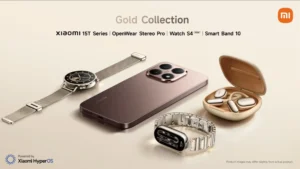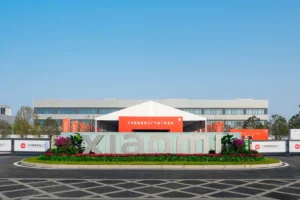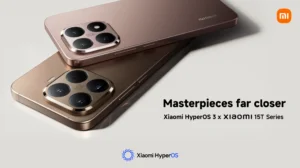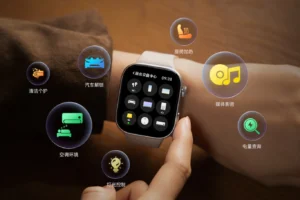Xiaomi’s Recent Announcement: End of Support for Seven Devices – Pause for HyperOS

Xiaomi has recently made a significant announcement that will affect many users. The company confirmed that seven popular devices will reach their end-of-life (EOL) status in April 2025. This means these devices will no longer receive software support, including essential security updates and enhancements. Additionally, Xiaomi has temporarily paused HyperOS updates for 20 days, impacting users who are eagerly waiting for the latest software improvements. This decision aligns with Xiaomi’s lifecycle management policy, which dictates a limited period for software updates after a device’s launch. Below, we explore the devices affected, the implications of their EOL status, and what users can expect in the future.

Devices Facing End of Support
The EOL announcement encompasses a variety of devices, ranging from gaming to budget-friendly smartphones. Each of these models has played a significant role in Xiaomi’s lineup. Here’s a closer look at the devices that will no longer receive updates after April 2025:
| Device Name | Launch Date | Key Features |
|---|---|---|
| POCO F4 GT | April 2022 | Snapdragon 8 Gen 1, 120Hz AMOLED, advanced cooling |
| Redmi K50 Gaming | February 2022 | Snapdragon 8 Gen 1, gaming triggers |
| Redmi 10A | March 2022 | MediaTek Helio G25, 5000mAh battery |
| Redmi Note 11S | January 2022 | MediaTek Helio G96, 108MP camera, 90Hz AMOLED display |
| Redmi Note 11 Pro+ 5G | January 2022 | Dimensity 920, 120W HyperCharge, 108MP camera |
| Xiaomi 11i | January 2022 | Dimensity 920, 120Hz AMOLED display |
| Xiaomi 11i HyperCharge | January 2022 | 120W fast charging, flagship-level performance |
The end of support for these devices means they will no longer receive crucial updates, including security patches and HyperOS enhancements. This decision may disappoint users who rely on regular updates for optimal performance and security.
Implications of End-of-Life Status
When a device reaches EOL, it stops receiving software updates, including vital security patches and bug fixes. Although these devices will continue to function, the absence of updates poses several risks:
- Security Vulnerabilities: Without regular security patches, devices become increasingly susceptible to malware and cyber threats. As new vulnerabilities emerge, users may find their devices more vulnerable.
- Compatibility Issues: As applications and services evolve, they may require newer operating systems. EOL devices may struggle to run the latest software, leading to compatibility challenges.
- Performance Decline: Over time, the lack of optimizations can result in slower performance and glitches, negatively affecting user experience.
Xiaomi typically offers 2-3 years of major OS updates and 3-4 years of security patches for mid-range and flagship devices. Budget models like the Redmi 10A often have shorter support cycles. The EOL announcement aligns with this standard timeline, particularly for devices launched in early 2022.
Understanding the HyperOS Update Pause
In addition to the EOL news, Xiaomi has paused HyperOS updates for 20 days, as reported by various sources. HyperOS is Xiaomi’s next-generation operating system, aimed at providing a unified experience across smartphones, tablets, and IoT devices. This temporary halt may serve as a strategic move to address bugs or prepare for a major software rollout.
This pause affects all Xiaomi, Redmi, and POCO devices waiting for HyperOS updates, not just those nearing EOL. Users may experience delays in receiving anticipated features such as enhanced customization and improved battery management. Although Xiaomi hasn’t disclosed specific reasons for the pause, updates are expected to resume by mid-May 2025.
What Users Should Consider
For users of the seven EOL devices, here are some steps to consider:
- Assess Usage Needs: If security and app compatibility are essential, consider upgrading to a newer Xiaomi device, such as the Xiaomi 14 series or the Redmi Note 13 lineup.
- Backup Data: Regularly back up important data to cloud services or external storage to prevent loss in case of device issues.
- Explore Custom ROMs: Tech-savvy users might consider custom ROMs like LineageOS, which can extend device functionality. However, this may void warranties and requires technical expertise.
- Monitor Performance: Keep an eye on your device’s performance and app compatibility over the next year to decide when to replace it.
For those affected by the HyperOS pause, staying informed is crucial. Check Xiaomi’s official channels or community forums for updates on the resumption of HyperOS rollouts.
Xiaomi’s Lifecycle Management Explained
Xiaomi’s approach to device support reflects industry standards, balancing cost, innovation, and user experience. While competitors like Samsung and Google offer longer update cycles, Xiaomi’s 2-4 year window remains competitive, particularly for budget and mid-range devices. The company’s strategy of frequent hardware releases ensures a steady stream of new options, although this can lead to shorter support periods for older models.
The recent EOL announcement and HyperOS pause highlight Xiaomi’s efforts to streamline its software ecosystem while managing a diverse device portfolio. As Xiaomi expands HyperOS across its lineup, users can anticipate a more cohesive and feature-rich experience on supported devices.
Conclusion
Xiaomi’s decision to end support for seven popular devices in April 2025 and pause HyperOS updates for 20 days emphasizes the realities of smartphone lifecycle management. While the POCO F4 GT, Redmi K50 Gaming, Redmi 10A, Redmi Note 11S, Redmi Note 11 Pro+ 5G, Xiaomi 11i, and Xiaomi 11i HyperCharge will no longer receive software updates, they remain functional for now. Users should evaluate their options, from upgrading to newer models to exploring alternative software solutions. The HyperOS pause is likely temporary, with Xiaomi preparing for a robust update rollout soon. Stay tuned to Xiaomi’s official channels for the latest developments.
End of support for Xiaomi devices
Xiaomi’s end of support for devices highlights the importance of timely updates and user awareness in technology.
Tags: POCO F4 GT, Redmi K50 Gaming, Redmi 10A, Redmi Note 11S, Xiaomi 11i, HyperOS






